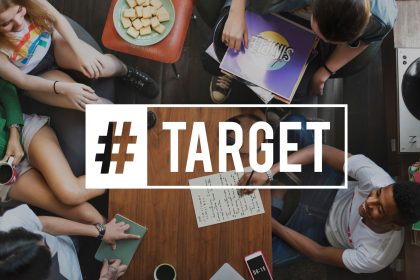Digital marketing is all about reaching the right people. Instead of shouting the same message to everyone, businesses now zoom in on specific groups—like teens, parents, or city dwellers. This strategy, called demographic focus, helps them save money and make customers happy. In this article, we’ll dive into what demographic focus is, why it’s a game-changer, how it works, and some real examples backed by solid data.
What Is Demographic Focus?
Demographic focus means splitting people into groups based on basic info about them. Think:
- Age: Teens, adults, or seniors?
- Gender: Men, women, or non-binary?
- Location: City folks or small-town residents?
- Income: Big earners or budget shoppers?
- Interests: Gamers, foodies, or fitness fans?
By understanding these details, businesses can craft ads that feel personal. A toy company might target parents aged 30-40, while a skateboard brand might aim for teens aged 13-18.
Why Does Demographic Focus Matter?
Picture this: You’re selling sunscreen. Would you advertise to people in a snowy town? Probably not! Demographic focus makes sure your message hits the right crowd. A report by Statista (2023) showed that global digital ad spending hit $626 billion in 2023 and is set to climb to $836 billion by 2026 (Statista, 2023). With that much cash at stake, businesses can’t waste it on the wrong people.
It’s also about making customers feel special. Research from Epsilon (2018) found that 80% of consumers are more likely to buy when brands personalize their experience (Epsilon, 2018). An ad for dog treats sent to pet owners? That’s a win!
How Businesses Use Demographic Focus
Here’s the step-by-step playbook businesses follow:
- Gather Data
Tools like Google Analytics show who’s visiting a website—age, location, and more. Social media platforms like Instagram give insights about followers too. - Group People
This is called segmentation. A shoe brand might target teens for sneakers and older adults for comfy slippers. - Make Tailored Ads
Businesses create campaigns for specific groups. HubSpot (2021) says targeted ads can lift sales by up to 20% compared to generic ones (HubSpot, 2021). - Test and Tweak
They try different ads and see what sticks. Tools like Mailchimp help test ideas fast.
Real Examples of Demographic Focus
Let’s see it in action:
- Nike and Gen Z
Nike targets young, active people aged 18-34. Their TikTok campaigns with cool, short videos hooked Gen Z, helping them stay a top brand. While exact numbers vary, Nike’s focus on youth has kept their revenue strong—$51.2 billion in 2023 (Nike, 2023). - Dove and Women
Dove’s “Real Beauty” campaign speaks to women, especially those over 40, with ads featuring real people. Unilever (2020) reported that this approach built trust with 70% of women in this age group feeling more connected to Dove (Unilever, 2020). - Coca-Cola and Local Vibes
Coca-Cola tweaks ads by location. In hot regions, they push refreshing drinks; in cold ones, they go for holiday cheer. This flexibility keeps them relevant everywhere.
Hard Numbers That Prove It Works
Data backs up demographic focus:
- Age: Pew Research Center (2022) found 65% of 18-29-year-olds use Instagram, compared to just 13% of those over 65 (Pew Research Center, 2022). Brands chasing young buyers know where to go.
- Gender: Women drive 70-80% of consumer purchases, per Forbes (2021) (Brennan, 2021). That’s why beauty brands target them.
- Income: eMarketer (2023) says high earners (over $100,000) spend 30% more online than lower-income groups (eMarketer, 2023).
Challenges to Watch Out For
It’s not perfect. Focusing too narrowly might miss other buyers—like targeting kids for toys but forgetting parents pay. Plus, privacy worries are real. Cisco (2023) found 60% of people fear how their data is used (Cisco, 2023). Businesses must play by rules like GDPR to stay safe.
What’s Next for Demographic Focus?
Tech is making this sharper. AI tools like Hootsuite analyze data and pick the best groups to target. With e-commerce sales at $5.8 trillion in 2023 (Statista, 2023), there’s more info to use than ever. Soon, ads might shift based on weather or even your mood—coffee ads when you’re sleepy, anyone?
Tips for Small Businesses
No big budget? No problem:
- Use free tools like Google Analytics.
- Ask customers what they like.
- Start with one group—like local teens.
- Check what works and adjust.
Note
Demographic focus is a secret weapon in digital marketing. It helps businesses find their people, cut waste, and boost sales. From Nike’s youth vibe to Dove’s real women, the proof is in the numbers. As tech grows, this strategy will only get stronger. Whether you’re big or small, knowing your crowd is how you win online.
References
Brennan, B. (2021, March 8). Why she buys: The new strategy for reaching the world’s most powerful consumers. Forbes. https://www.forbes.com
Cisco. (2023). 2023 Consumer Privacy Survey. https://www.cisco.com
eMarketer. (2023). Online spending trends by income level. https://www.emarketer.com
Epsilon. (2018). The power of personalization. https://www.epsilon.com
HubSpot. (2021). 2021 Marketing statistics report. https://www.hubspot.com
Nike. (2023). 2023 Annual report. https://www.nike.com
Pew Research Center. (2022). Social media use by age group. https://www.pewresearch.org
Statista. (2023). Global digital ad spending forecast. https://www.statista.com
Unilever. (2020). Dove real beauty impact report. https://www.unilever.com
















